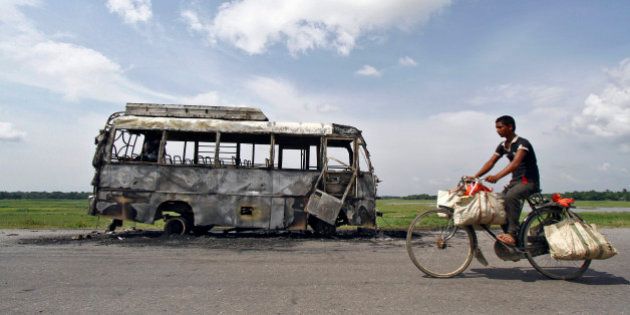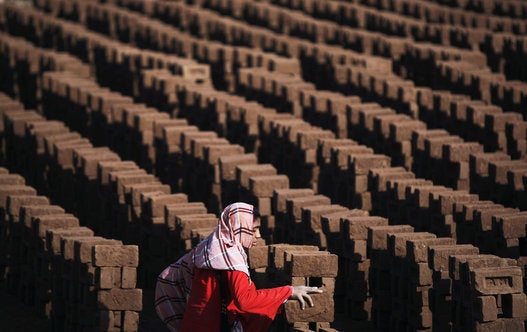
Growing up in Haflong, a remote mountainous town in Dima Hasao District, Assam, offered me the privilege of accessing the town's multiple ethnic cultures. This experience held me in good stead as I chose to study ethnic conflicts in the Northeast years later. Most of these conflicts are about dignity, prestige and identity. Dignity with regard to being a Naga, or a Bodo or a Meitei; prestige with regard to their culture; and preservation of ethnic identity.
As a woman, I found it challenging to assert my right to do research the way I wanted to, especially during field work.
However, despite these three common traits, there are clear class divisions. There are those with a government job; there are those who conduct business; and there are those who depend on their own home produce for their sustenance. For some, ownership of the finest cars, or wearing expensive branded clothes amounts to status and identity, quite in consonance with the rest of the world. For others, it is a good education, or a reasonably safe environment. Significantly, the local state institutions manned by local residents tend to be highly corrupt. As a result, a level playing field is absent, with ethnic groups favouring their own kith and kin in jobs or government handouts. The lack of impartial oversight increases the corrupt practices.
For most of India, the Northeast is a "problem child", perceived as always demanding easy financial handouts from the State, but not willing to work hard for their own living and establishing competitive economies. Interestingly, during my field work, I noticed that Northeast ethnic communities lacked homogeneity, with intense rivalry between them with regard to ownership of land and resources. Moreover, while those from Northeast India complain about being marginalized in cities like Delhi and Bengaluru, people from other parts of India, like Bihar or Punjab, are equally marginalized in Meghalaya, Manipur or Nagaland where the Khasi, the Meitei or the Naga form the majority.
I believe that most of the armed conflicts in the Northeast are reactionary movements in which the armed groups fight to maintain traditional status quo and power...
As a woman, I found it challenging to assert my right to do research the way I wanted to, especially during field work. First, there are risks involved with regard to physical security. Second, people tend to judge you, not by your work, but by which institution you belong to, or where you come from. Moreover, the usual roles that women play in most of the conflict-affected areas are either by membership to Mothers' Associations, or the Meira Peibis, or the Matri Manch. These organizations are remarkable platforms through which women's voices on issues like drug addictions, HIV-AIDS, or misconduct by Indian security personnel, are raised. I am however looking for women leadership in political decision-making roles. Sadly enough, I find very few, be it in the leadership ranks of the armed groups or in traditional leadership structures. For instance, if you look at pictures of NSCN (IM) representatives that signed the Naga framework agreement with the Government of India on August 03, 2015, you will fail to find a single woman. This is despite the fact that women are most affected by these conflicts. Thereby, it is rather clear that women are allocated very traditional roles of being nurturers, marginalized within their own ethnic groups, the moment they assume more politically visible leadership roles.
I believe that most of the armed conflicts in the Northeast are reactionary movements in which the armed groups fight to maintain traditional status quo and power, resisting any attempts at change. These conflicts are not revolutionary movements that aim to change, for instance, the status of women in societies, or recreate traditional moulds in a more inclusive manner.
These conflicts are not revolutionary movements that aim to change the status of women in societies, or recreate traditional moulds in a more inclusive manner.
Despite traditional hierarchies that indulge men, I have met young, ambitious, confident women, from the Northeast who possess the courage to question societal stereotypes. I would urge those young women to aspire to assume leadership roles, be it political, economic or social. Moreover, do not be afraid of being judged as assertive when you demonstrate determination to reach your goals; remember, the sky is the not limit; reach for the stars.
For those striving to start careers in academia, I would urge you to strive towards excellence in research propelled by clear goals of what you like to pursue. My goal, for example, is to improve understanding of the Northeast of India, in other parts of India and the world. The good news is that the majority of those who questioned me, or exchanged ideas with me during several professional and personal interactions, truly sought to know more and understand. Finally, I understand that my role as a researcher studying conflicts is not to find blame but to present a situation as I could perceive it to the best of my ability. So that we can grasp the narratives and reasons resulting in conflicts for more informed problem-solving towards establishing peace.



Contact HuffPost India
Also see on HuffPost:
